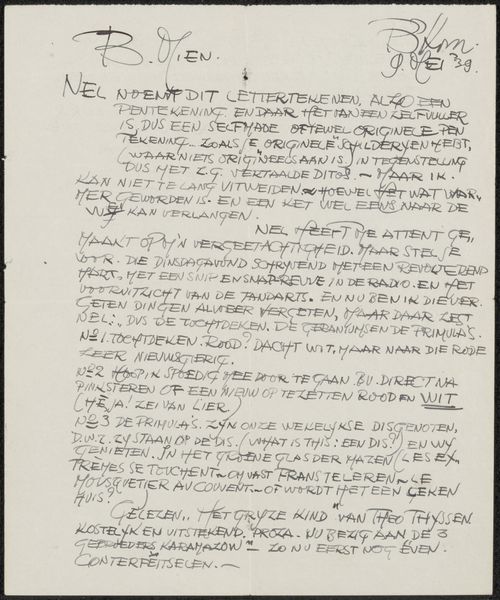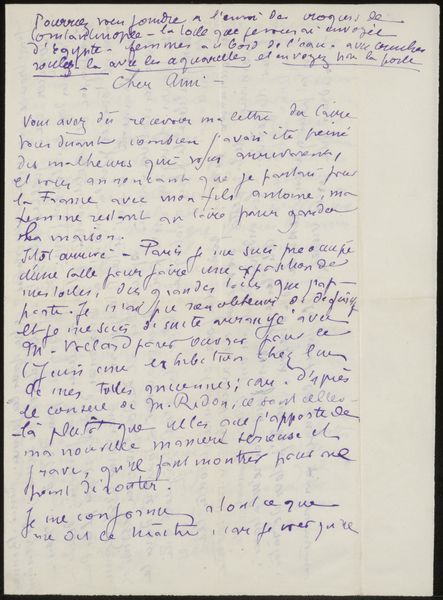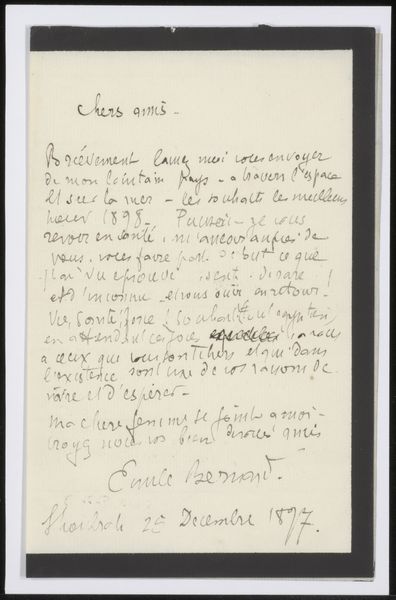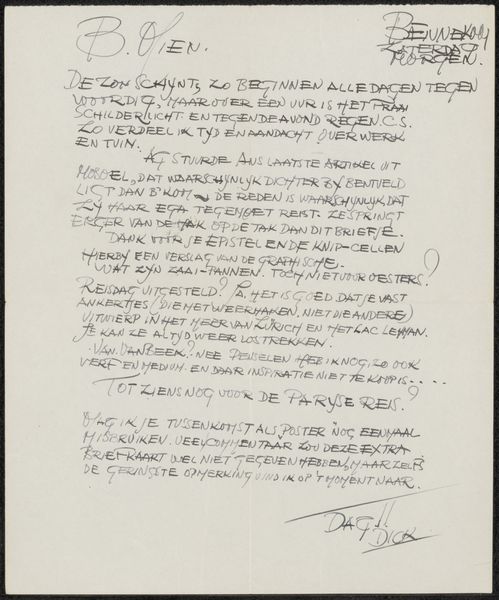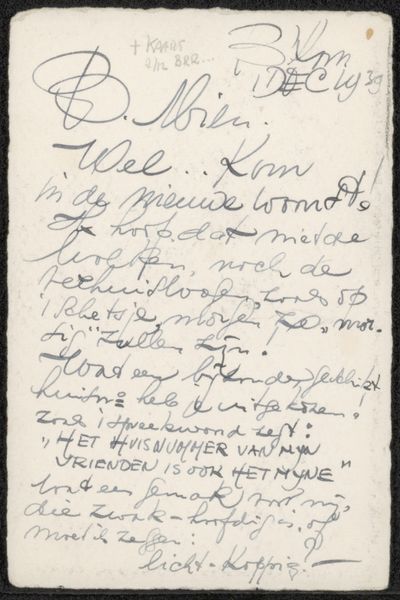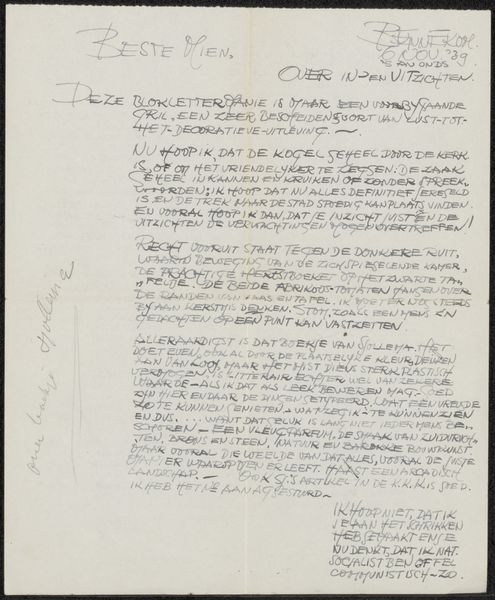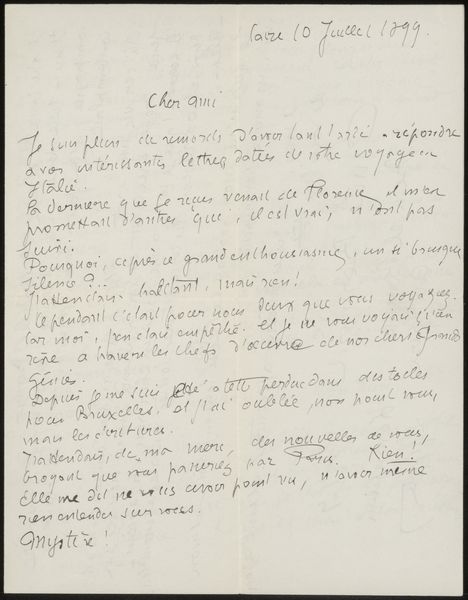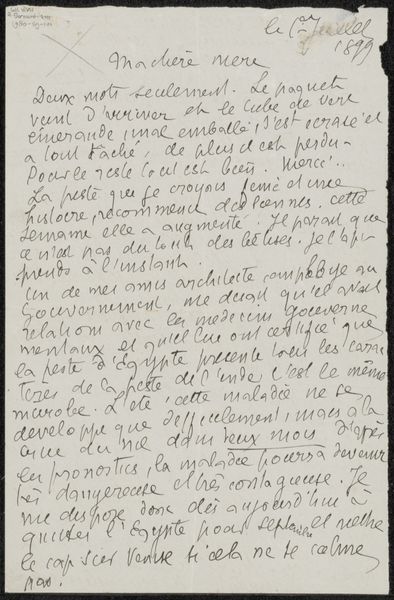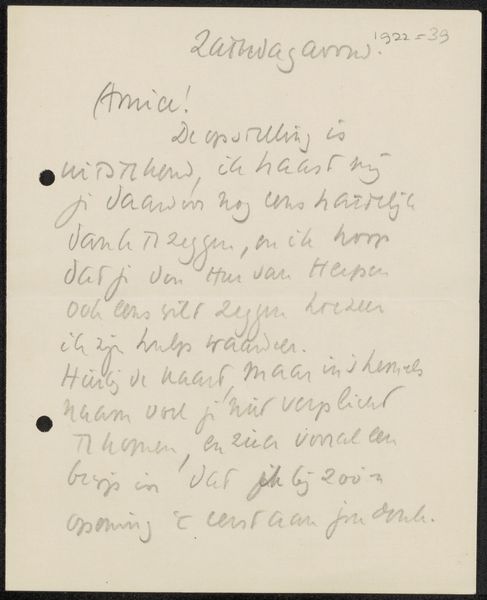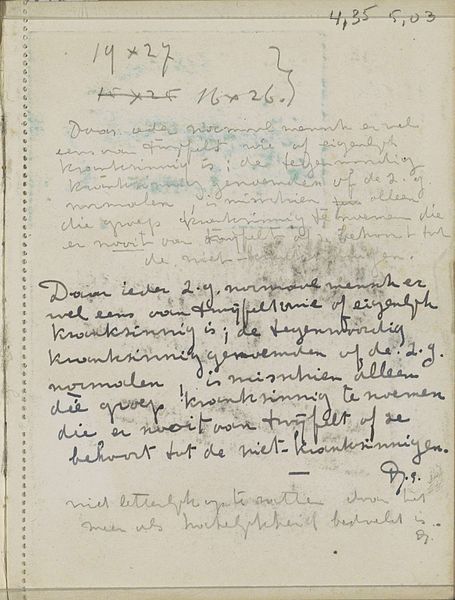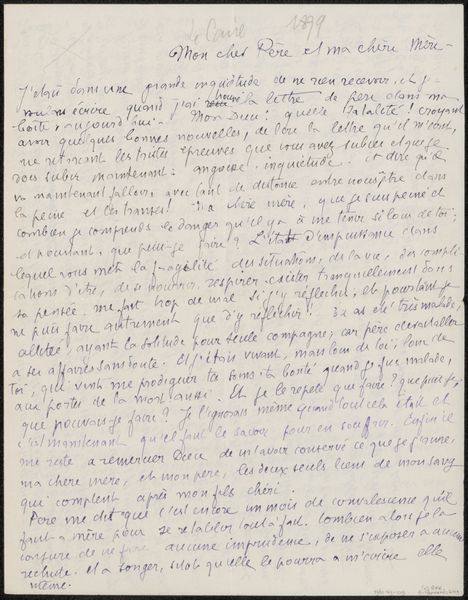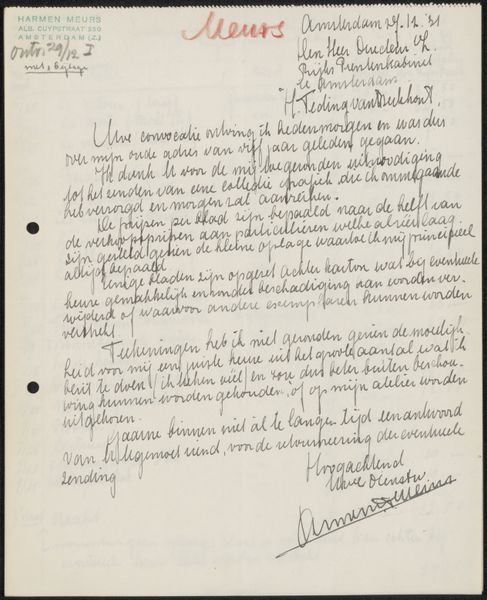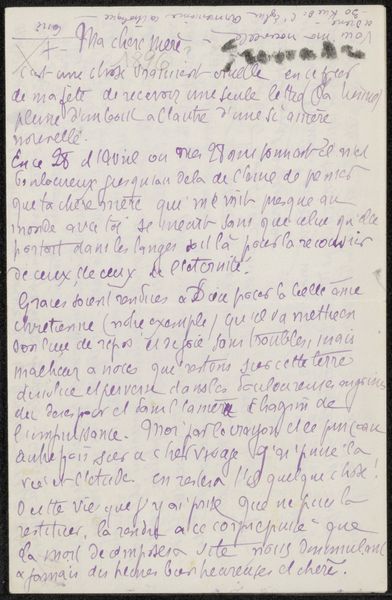
Copyright: Rijks Museum: Open Domain
Curator: Here we have Dick Ket's "Brief aan Mien Cambier van Nooten," likely from 1939. It’s an ink and pen drawing on paper. Editor: It's a handwritten letter with this intriguing sketch at the bottom. I am immediately struck by how intimate and personal this feels, and at the same time, how cryptic. How do you approach something like this? Curator: Well, understanding Ket’s context is key. He was grappling with severe physical limitations his whole life and also creating artwork in a really complicated historical moment. How might those personal struggles, combined with rising socio-political tensions, filter into his artistic expression? Editor: I see what you mean. The letter isn't just a casual note; it's a glimpse into the artist’s mind during a troubled period. So, you're suggesting the references within might have coded meanings or reflect the anxieties of the time? Curator: Precisely! Look at the fragmented thoughts, the allusions to music, the casual remarks amidst deeper confessions…it creates a sense of instability and vulnerability. What’s your take on his references to “criticism” and the plea to “be thirty”? How can these inform your interpretation of this personal letter? Editor: Maybe it’s a push against expectations, both artistic and personal? Like he's yearning for some idealized moment, beyond criticism, even though the world around him seems to be in turmoil. Curator: Exactly! Ket's letter embodies a push-and-pull, between private struggles and broader social anxieties. What did you learn by analysing it with social and historical perspective? Editor: I've learned that sometimes the most personal art is deeply entwined with the broader world. Curator: Indeed! Now we have a fuller appreciation for the letter as more than a private correspondence but a valuable lens through which we might reflect on life in Europe during the period just before the start of the Second World War.
Comments
No comments
Be the first to comment and join the conversation on the ultimate creative platform.
